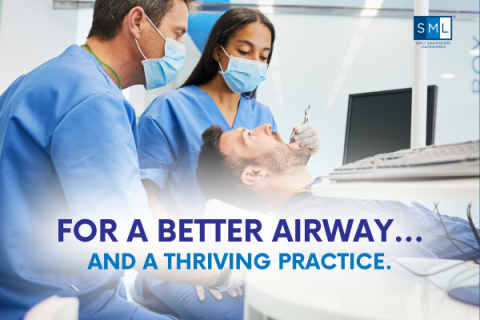FOR A BETTER AIRWAY… AND A THRIVING PRACTICE.
New discoveries and diagnostic modalities in the treatment of Obstructive Sleep Apnea (OSA) are changing the way we all look at dentistry. You, the dentist, are in a unique position to help detect and stabilize the airway and successfully treat OSA via the use of oral appliances.
The good news? Non-invasive, affordable and easy to adjust, oral appliances are fast becoming the first line treatment of choice for patients who cannot tolerate CPAP… and for forward-thinking dentists who are looking to provide a more patient-compliant solution when it comes to airway therapy.
OSA: The Big Picture
When soft tissues in the throat collapse during sleep, blocking the airway and causing breathing to repeatedly stop and start, oxygen intake is severely impacted. This can lead to loud snoring, morning headaches, daytime fatigue. More seriously, it can trigger high blood pressure and increase the risk of heart problems or stroke.
Why Choose Oral Appliances for OSA?
Oral appliances offer several significant benefits over traditional therapies. Whether the task is to lift the soft palate or advance the tongue or hyoid, there is an appliance that can be customized to reposition soft tissues, support the airway, increase muscle tone (including pharyngeal and genioglossus activity)… and so much more.
Choosing the Right Appliance is Key
Appliance therapy for OSA is not a one-size-fits-all proposition. The key to clinical success lies in identifying the location and cause of the obstruction, then selecting a device with the right:
• Retention method
• Material and adjustability profile
• Mandibular movement control
• Vertical dimension capabilities
• Fabrication venue (lab or in-office)




